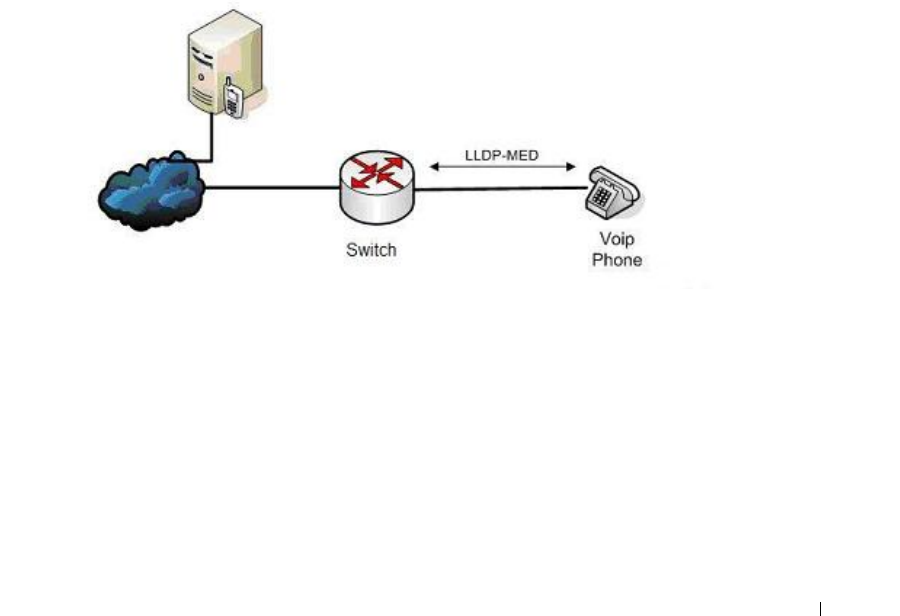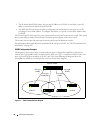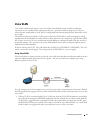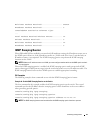
Switching Configuration 37
Voice VLAN
Voice VLAN enables switch ports to carry voice traffic with a defined priority in order to enable the
separation of voice and data traffic coming onto the port. A primary benefit of using Voice VLAN is to
ensure that the sound quality of an IP phone is safeguarded from deteriorating when the data traffic on the
port is high.
The inherent isolation provided by VLANs ensures that inter-VLAN traffic is under management control
and that network attached clients cannot initiate a direct attack on voice components. QoS based on IEEE
802.1P class of service (CoS) uses classification and scheduling to send network traffic from the switch in a
predictable manner. The system uses the source MAC address of the traffic traveling through the port to
identify the IP phone data flow.
IP Phones will use this VLAN. They will obtain their VLAN ID via CDP, DHCP or LLDP-MED. The voice
traffic is sent to the switch tagged. The setup protocols (CDP, DHCP, etc.) are not tagged.
Using Voice VLAN
When an IP phone is connected to the switch, the voice traffic from the phone and the data traffic from the
network could potentially deteriorate the voice quality. You can overcome this in multiple ways using
different options in Voice VLAN.
You can configure the switch to support Voice VLAN on a port that is connecting the VOIP phone. Both of
the following methods segregate the voice traffic and the data traffic in order to provide better service to the
voice traffic.
• When a VLAN is associated with the Voice VLAN port, then the VLAN ID information is passed onto
the VOIP phone using the LLDP-MED mechanism. By this method, the voice data coming from the
VOIP phone is tagged with the exchanged VLAN ID, thus regular data arriving on the switch is given
the default PVID of the port, and the voice traffic is received on a pre-defined VLAN. As a result, both
kinds of traffic are segregated in order to provide better service to the voice traffic.


















